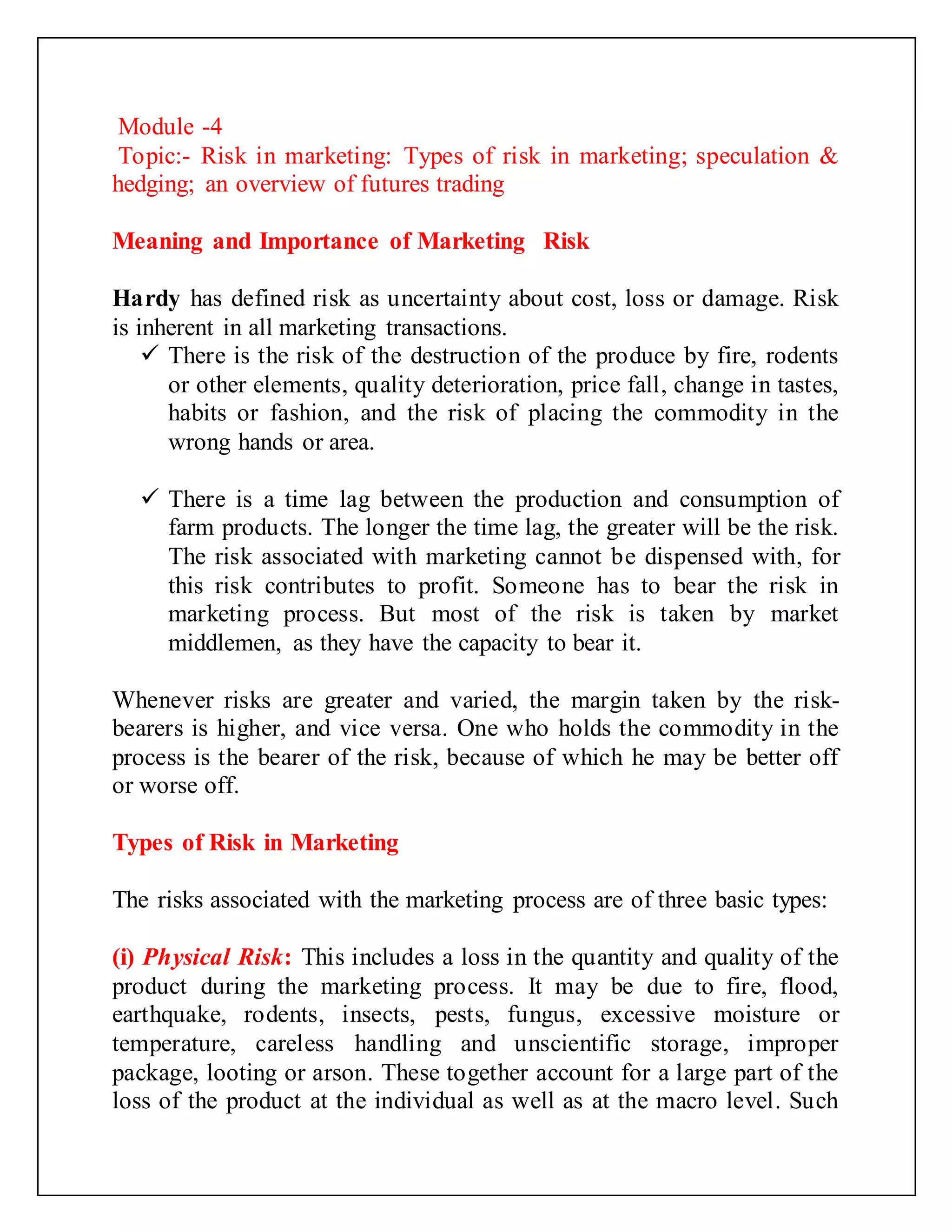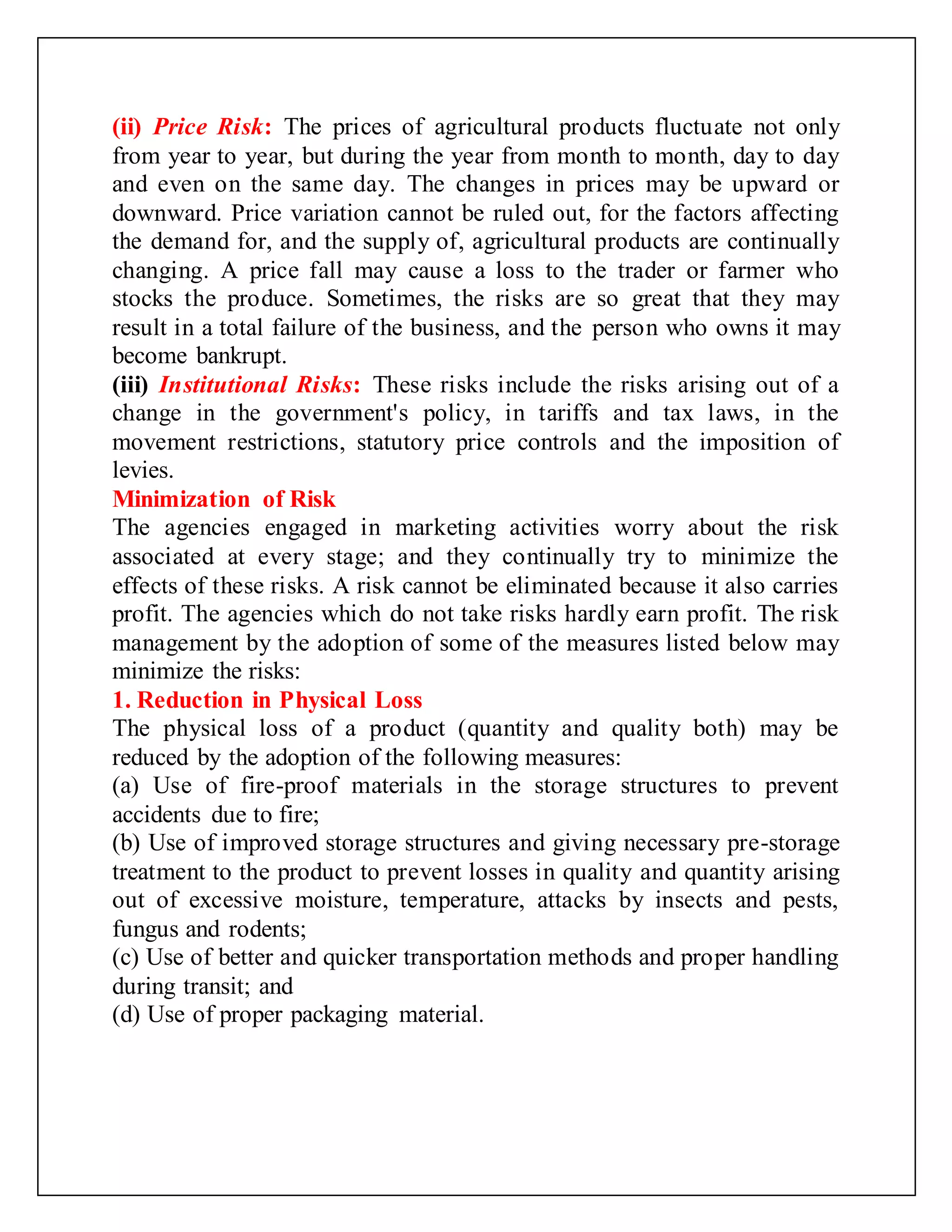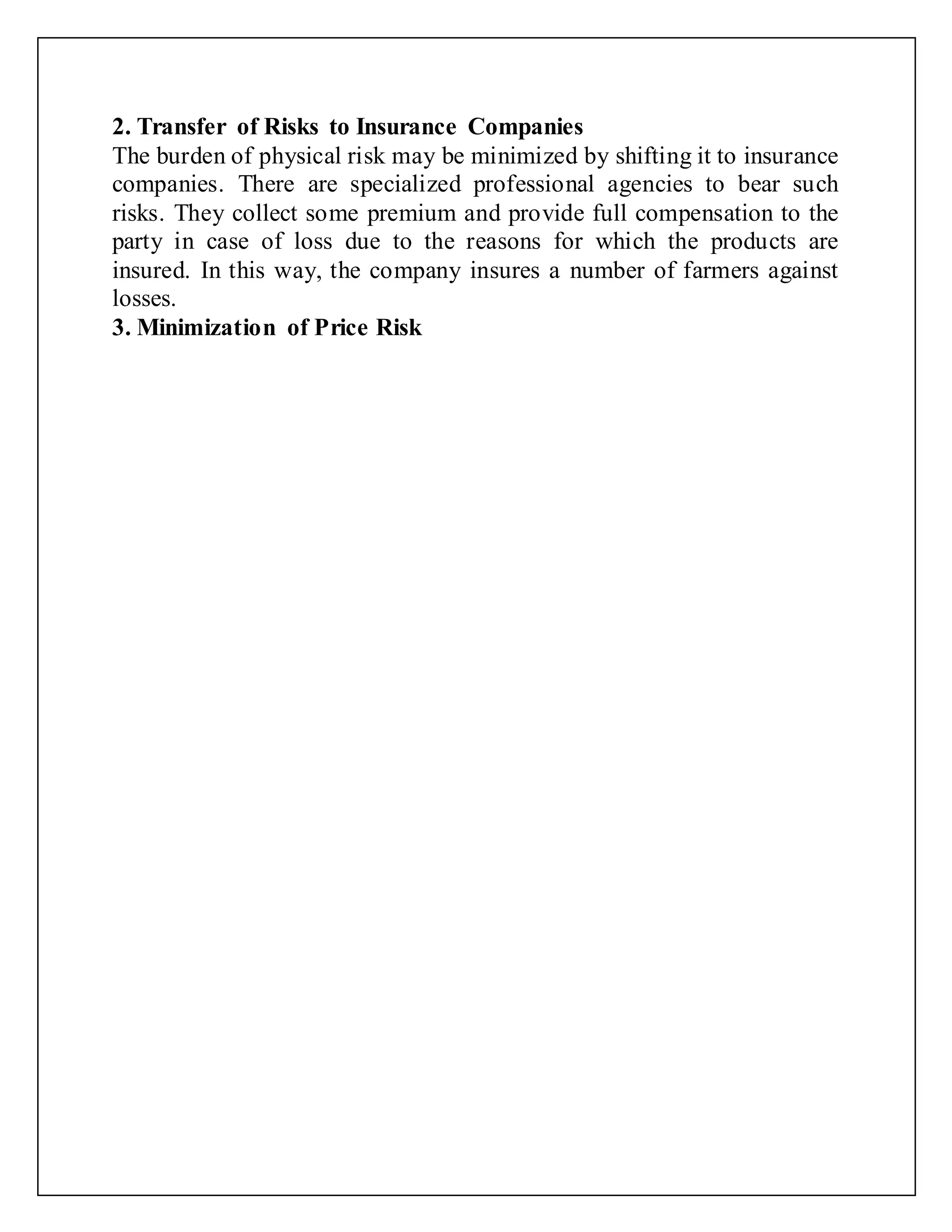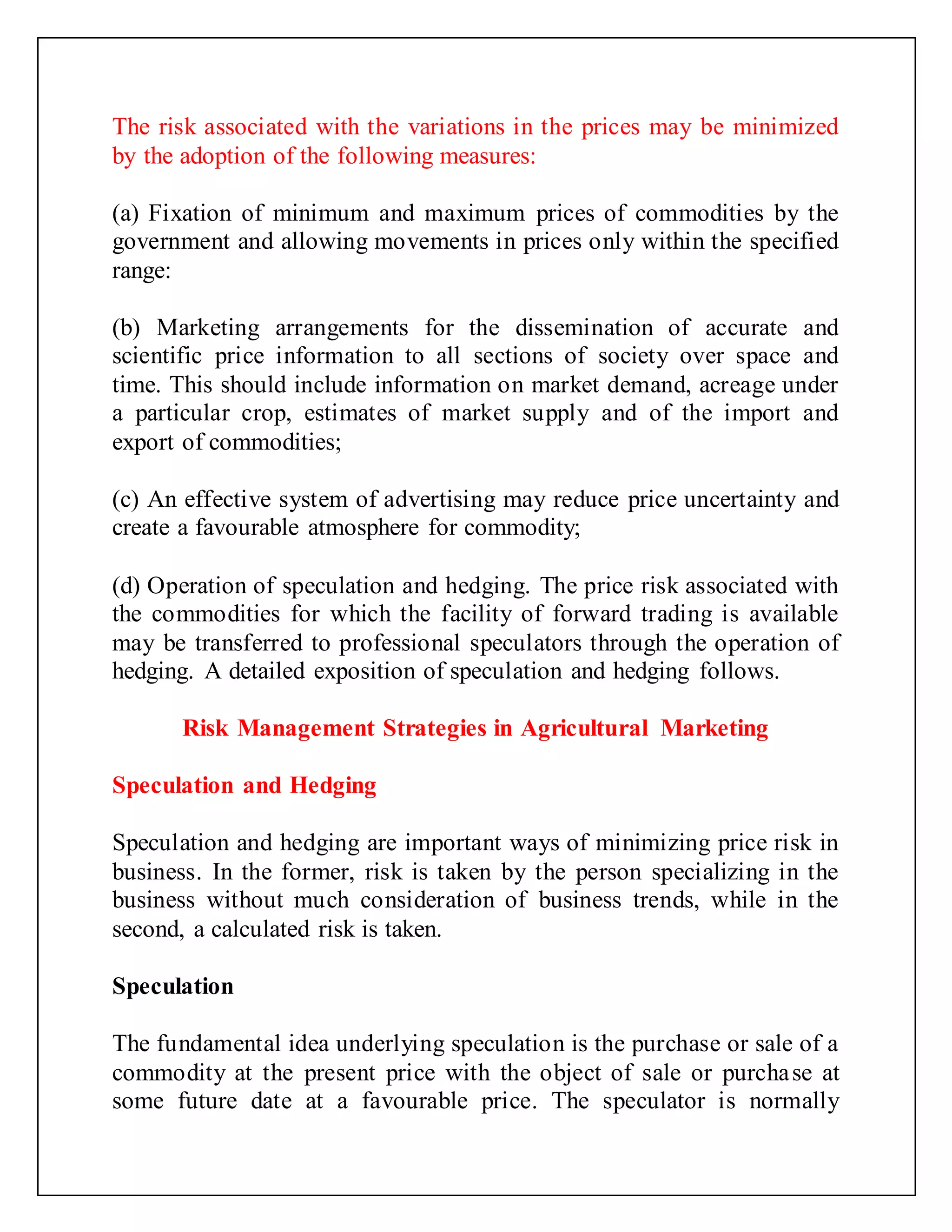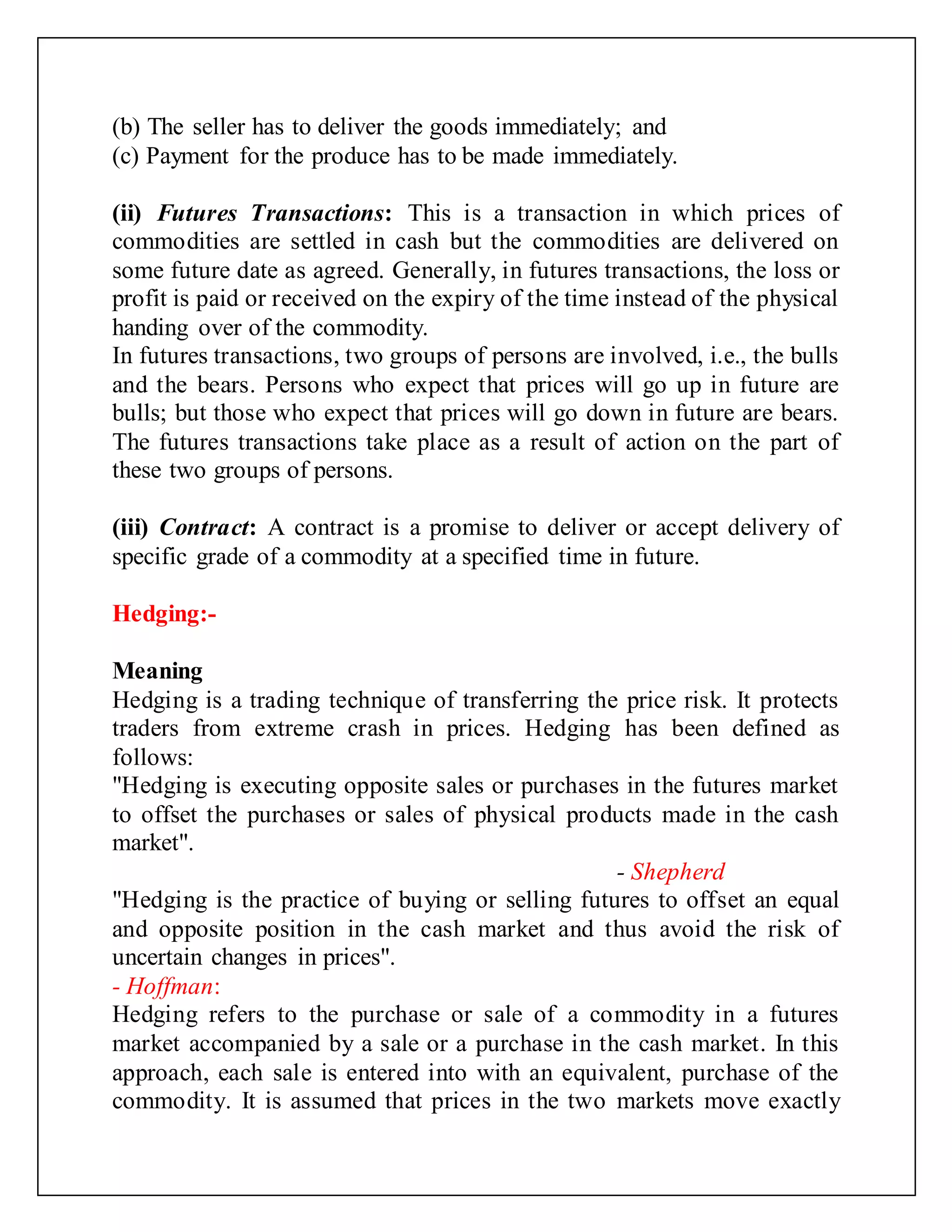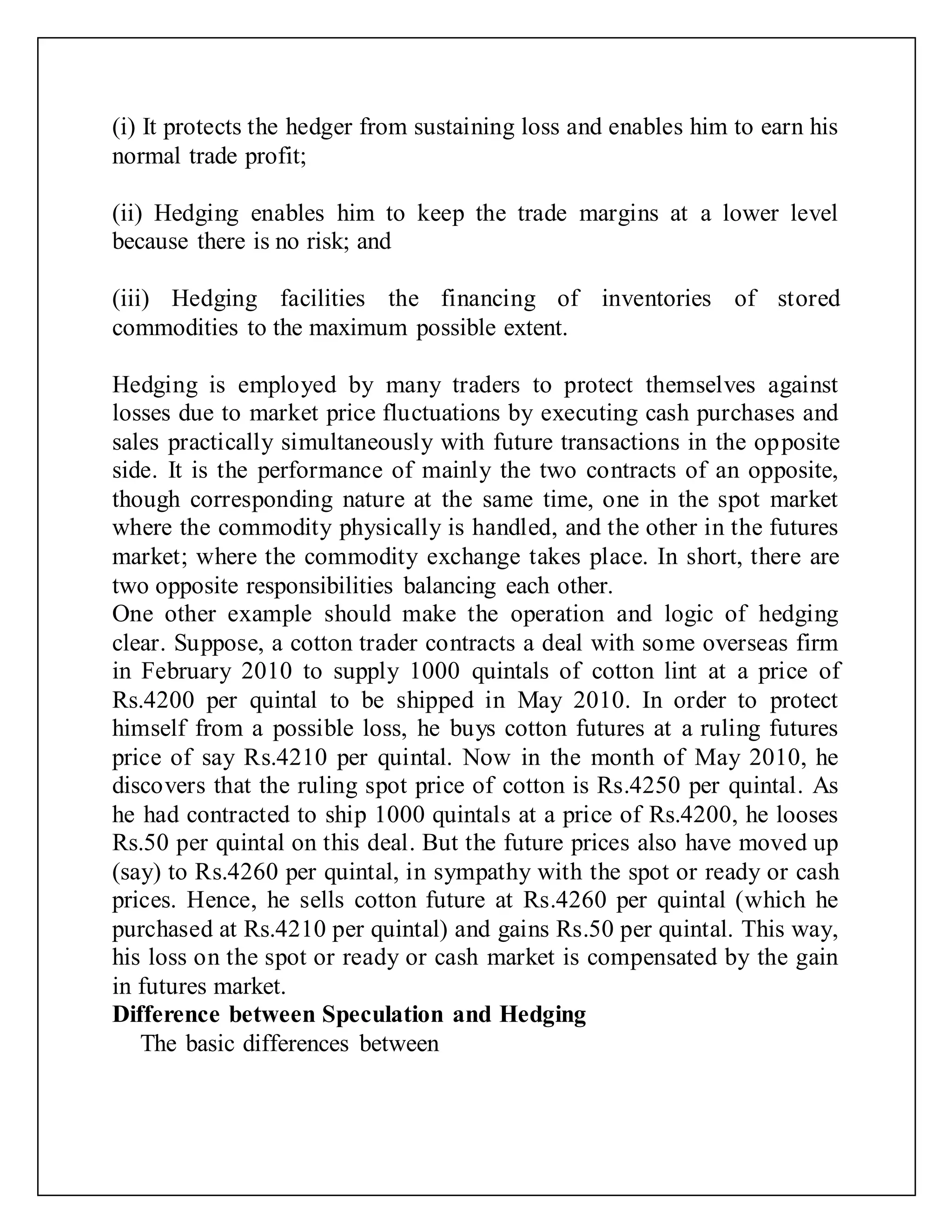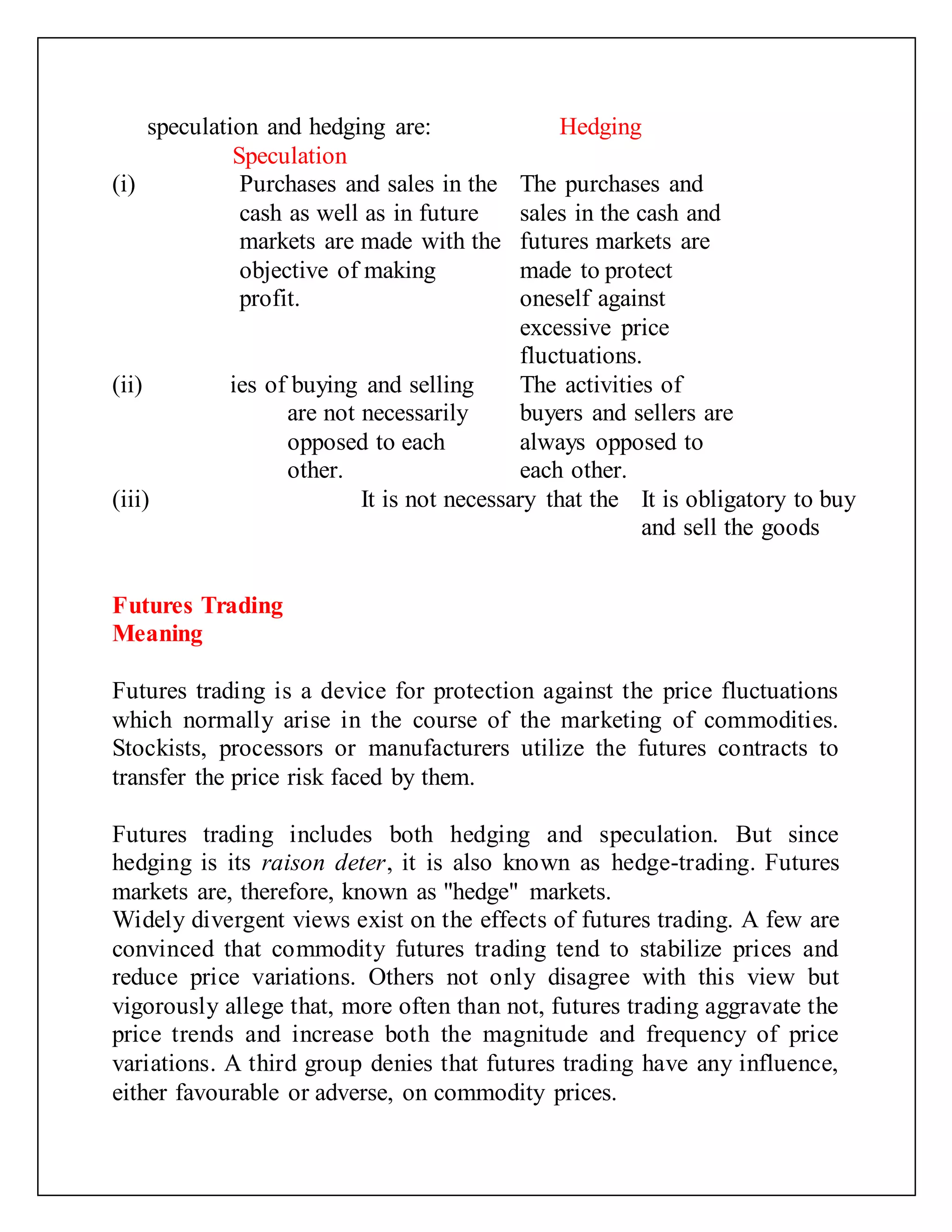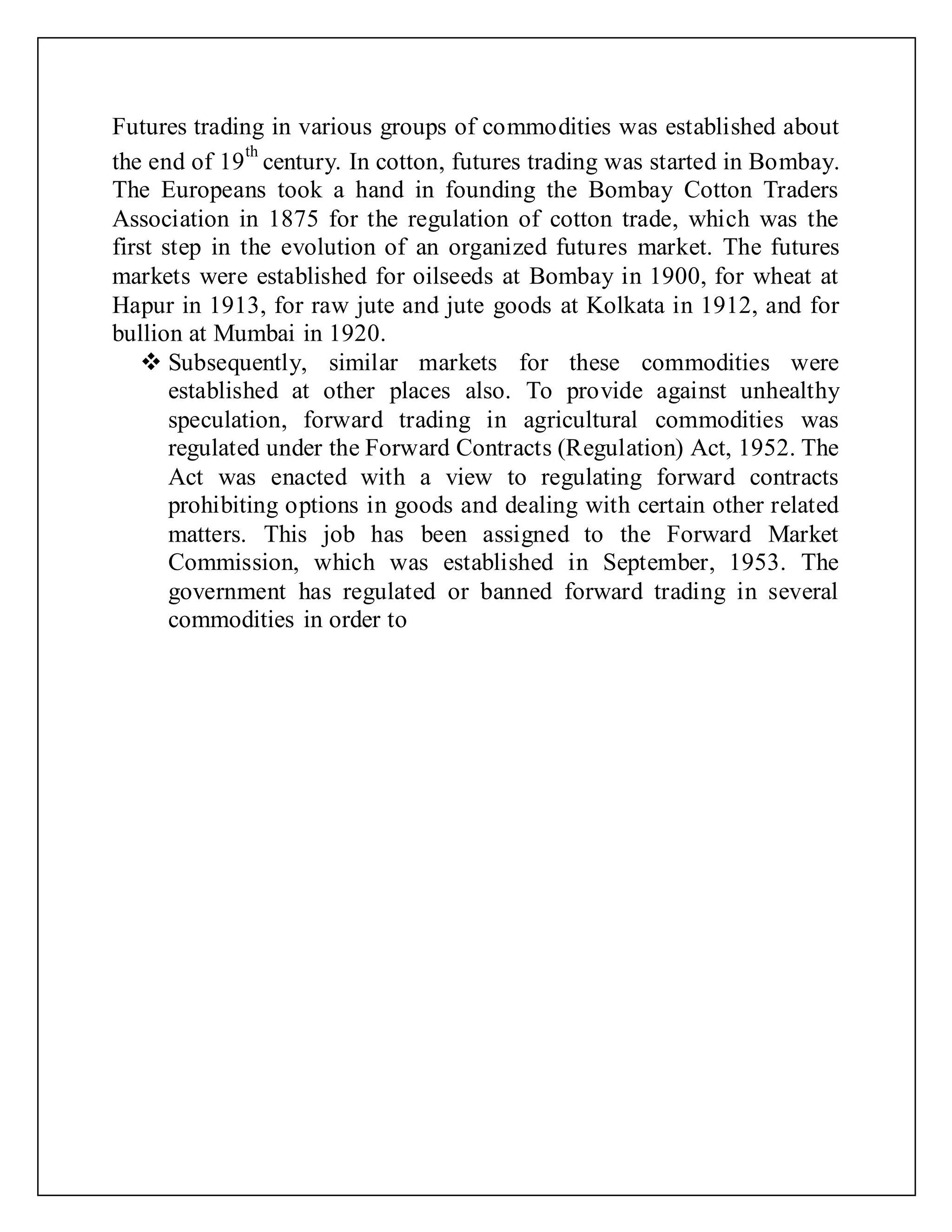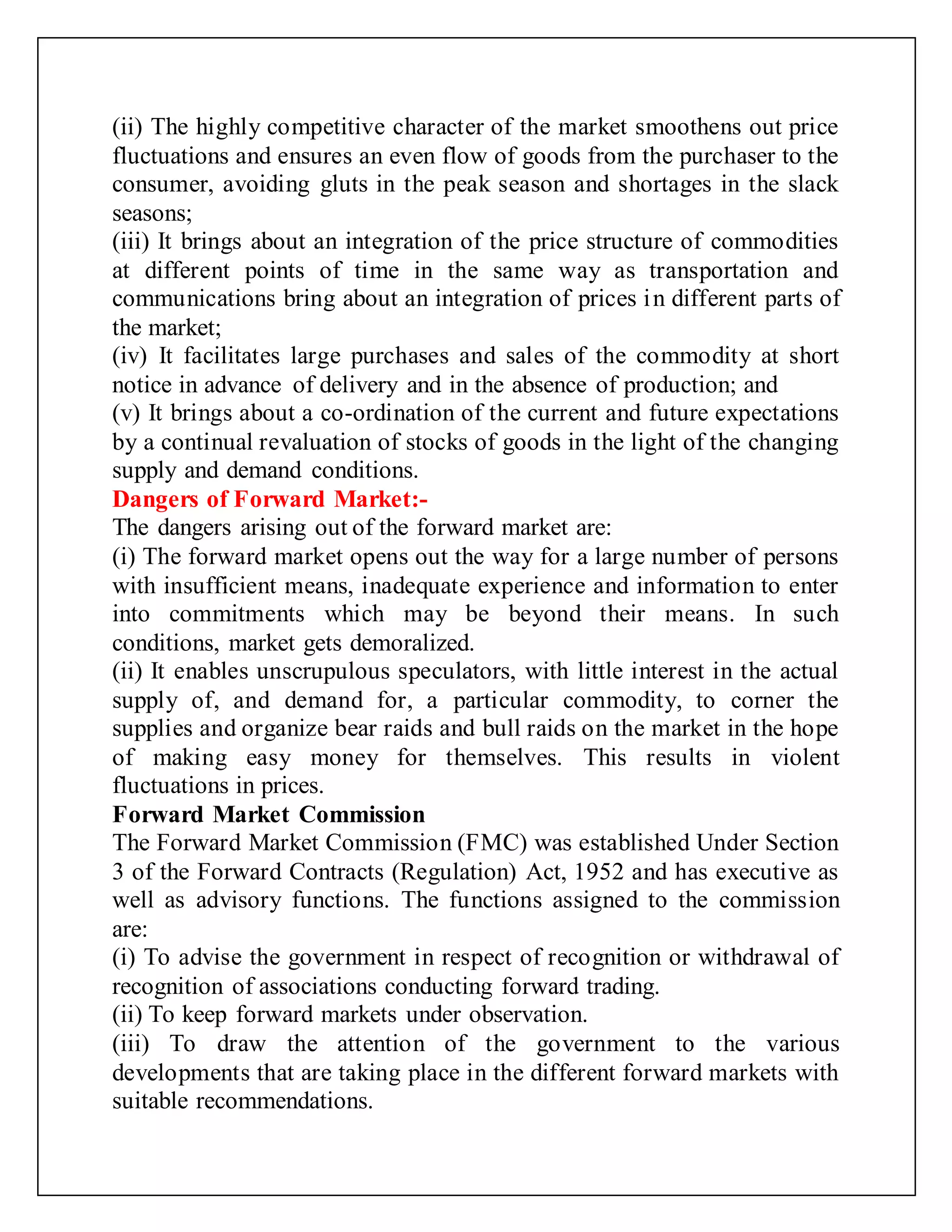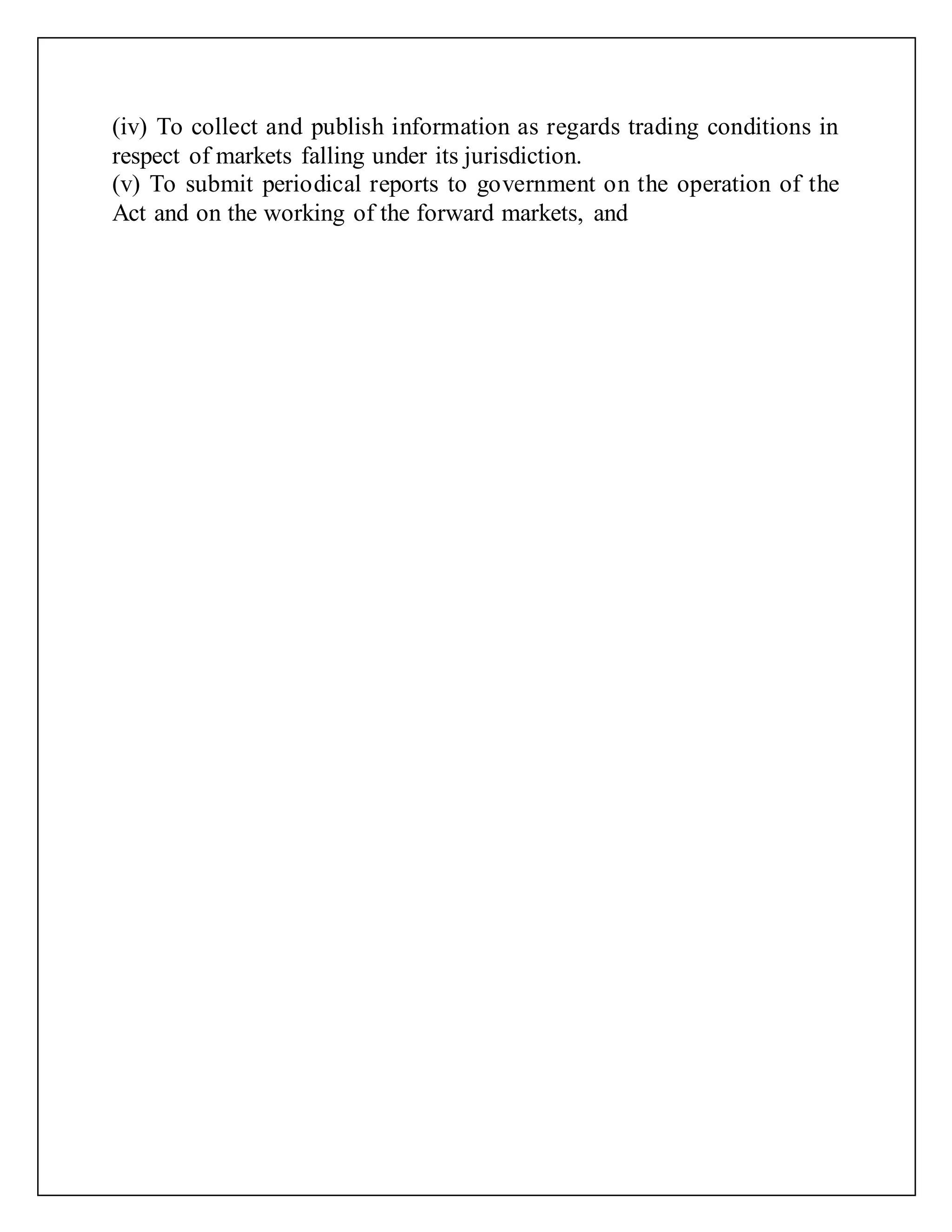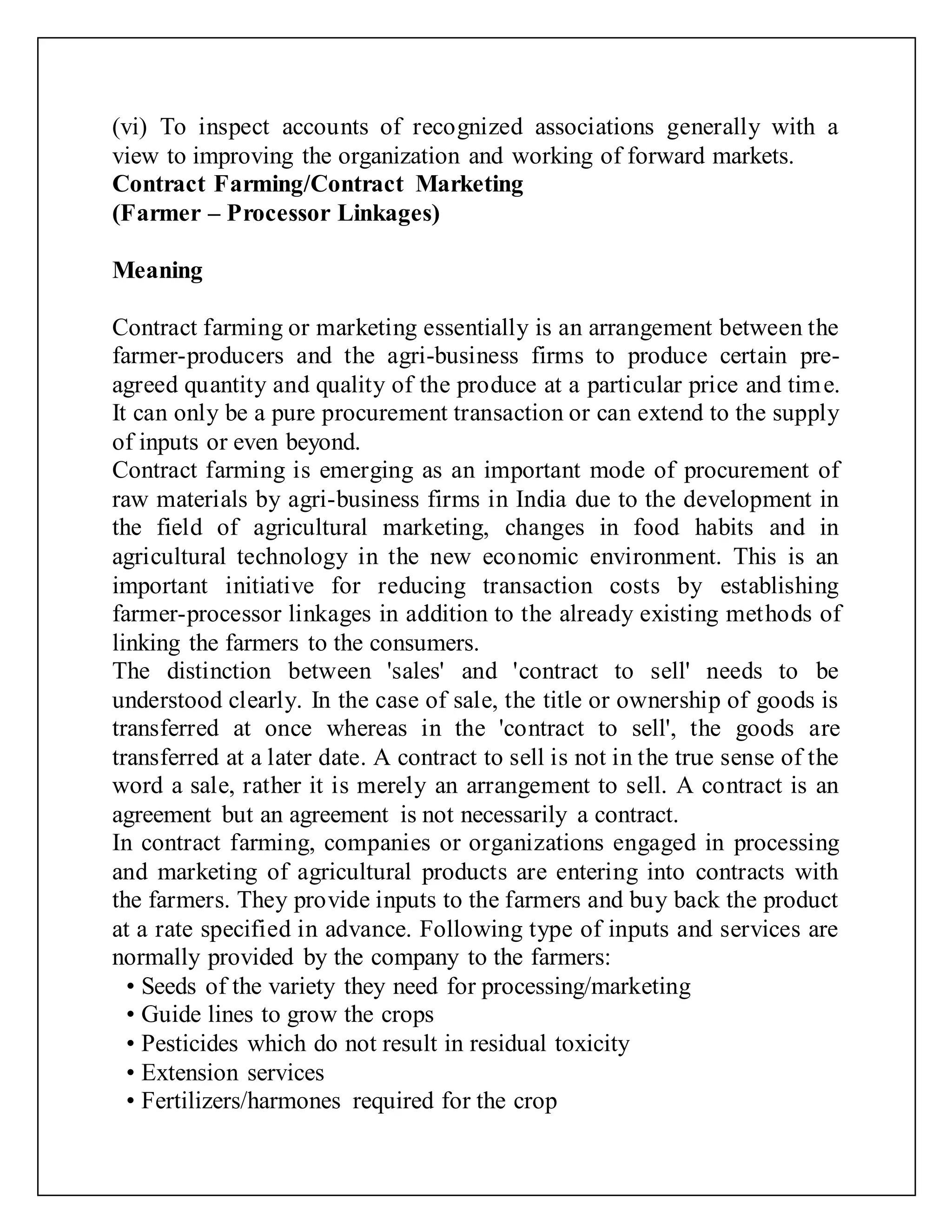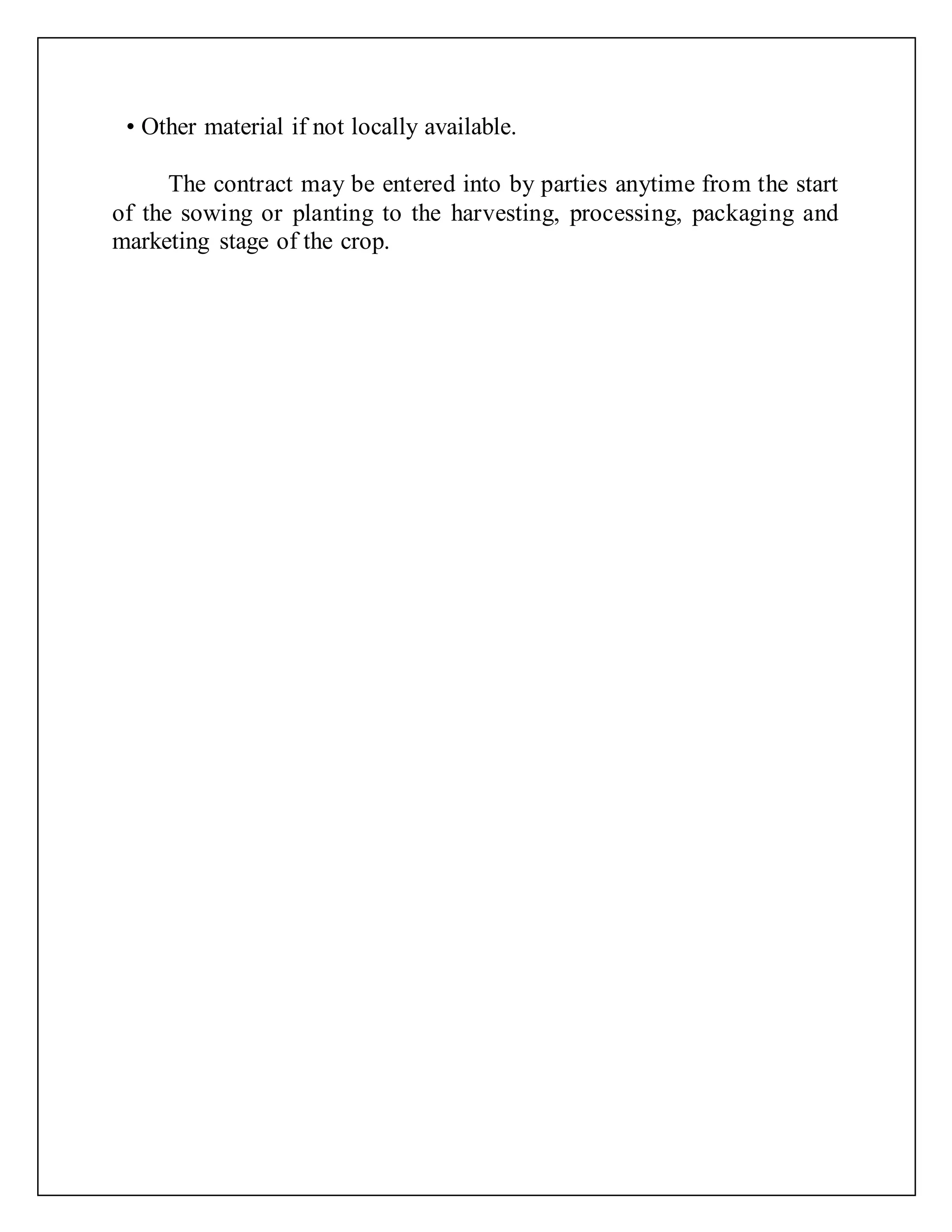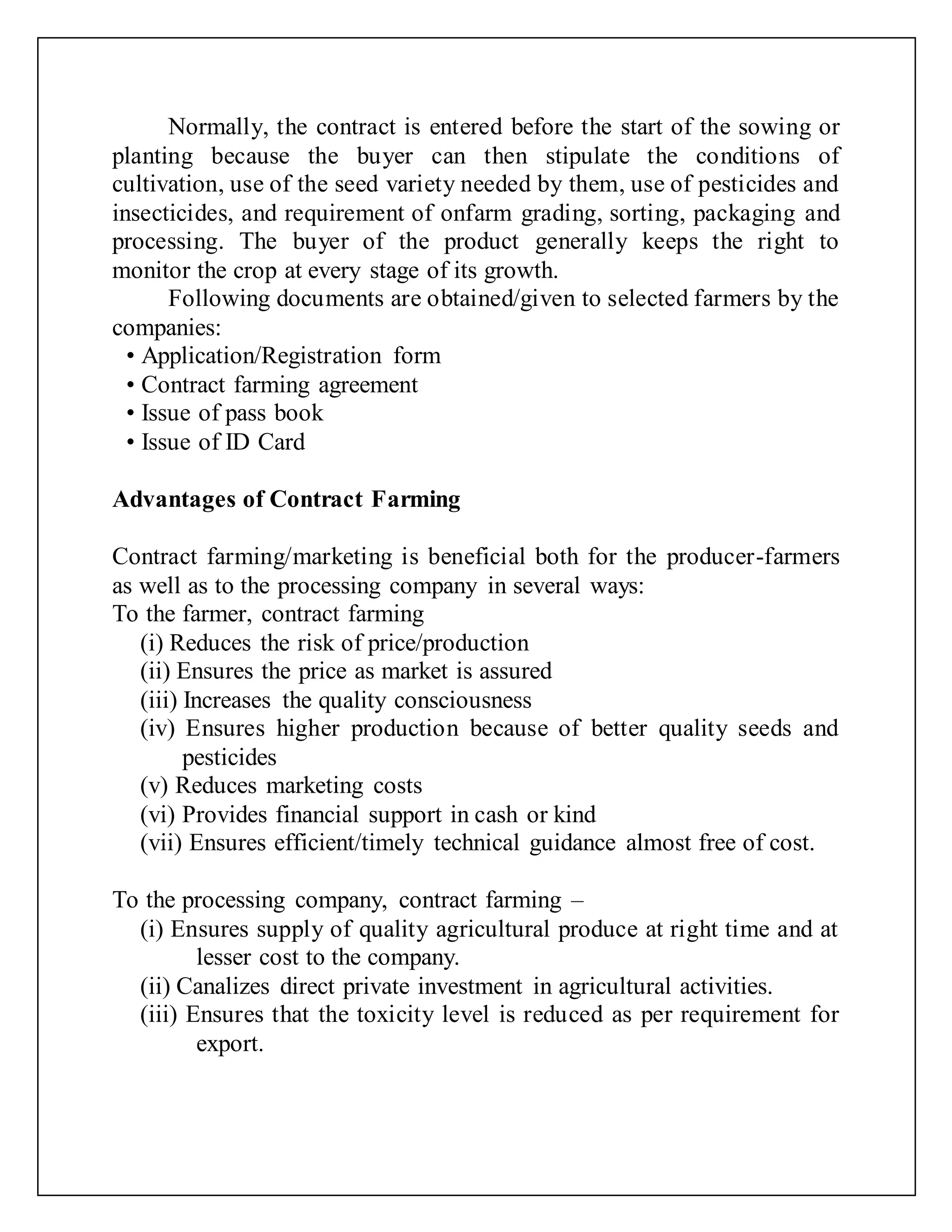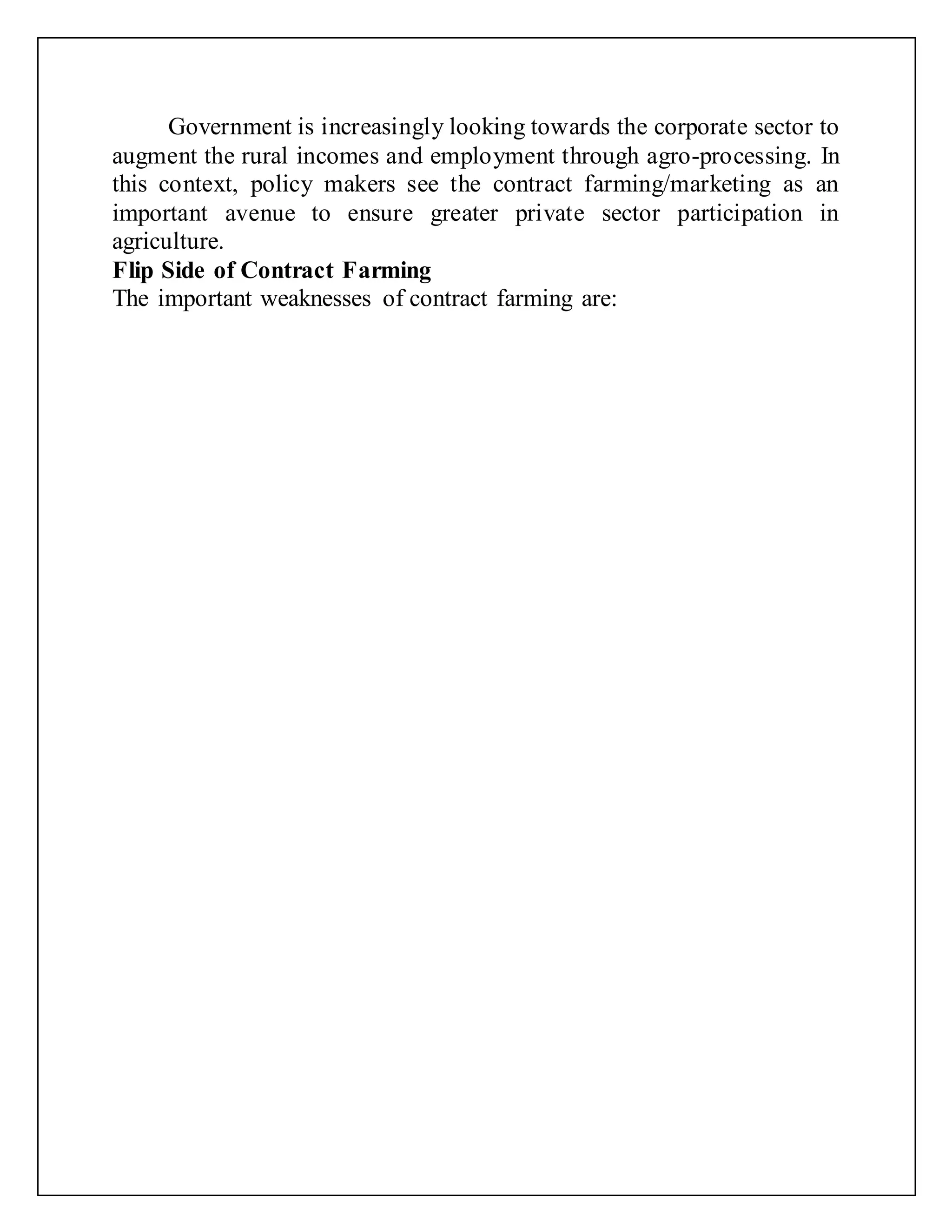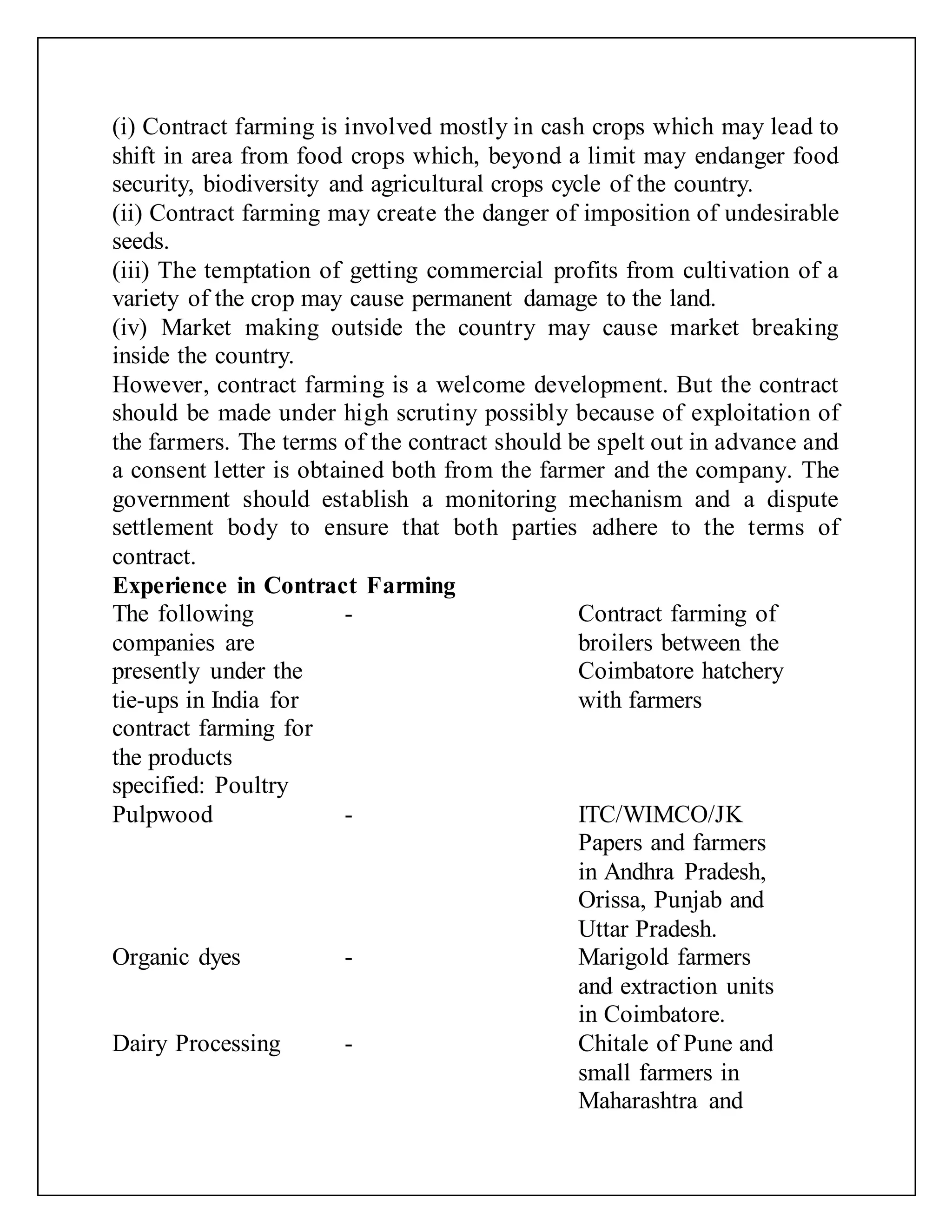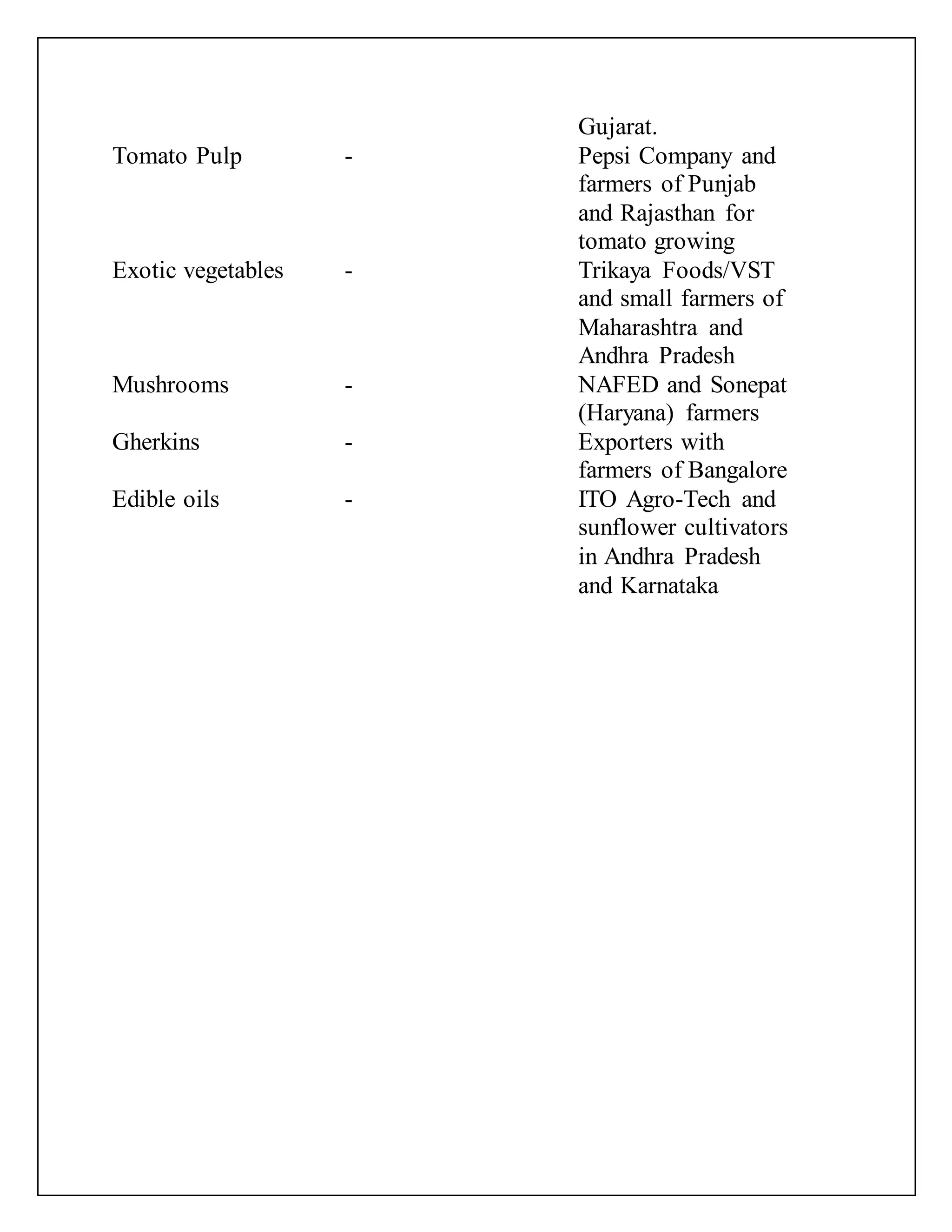This document discusses risk in marketing and futures trading. It defines marketing risk as uncertainty about costs, losses or damages. There are physical risks like product damage, quality deterioration, or price changes. Price risk is the fluctuation of prices over time. Institutional risks include changes in government policies. Hedging and speculation are described as ways to manage risk. Hedging involves offsetting transactions to reduce risk, while speculation aims to profit from price changes. Futures trading sets prices now for delivery later and can help producers and traders manage risk. Commodities suitable for futures markets are those that are plentiful, storable, homogeneous, in demand, and have fluctuating prices. Forward markets help reduce price fluctuations and integrate prices over time and
